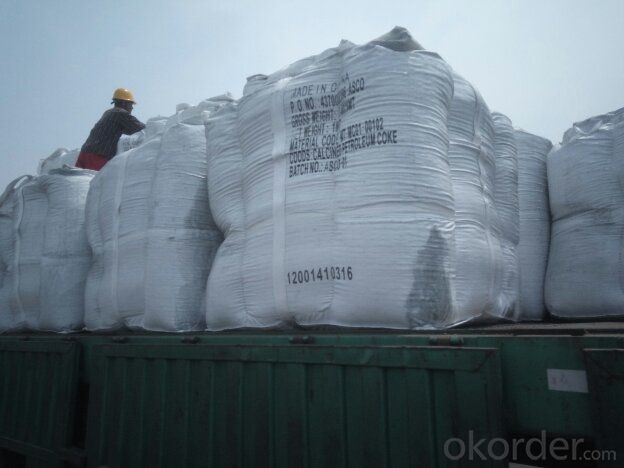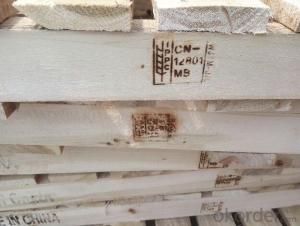Calcined Petroleum Coke as Injection Coke with Sulphur 0.7%max
- Loading Port:
- Qingdao
- Payment Terms:
- TT OR LC
- Min Order Qty:
- 20.1
- Supply Capability:
- 1011 m.t./month
OKorder Service Pledge
OKorder Financial Service
You Might Also Like
Intrduction
Carbon additive to ningxia production of anthracite as raw material, after washing, crushing, high temperature calcination, filter, etc. Craft refined and become.This is after the anthracite calcination generated high carbon content and low volatile component of the new product, is an ideal raw material to make steel.
Calcined Petroleum Coke comes from delayed coke which extracted from oil refinery. Although Calcined Petroleum Coke contains a little bit higher level of sulfur and nitrogen than pitch coke, the price advantage still makes it widely used during steel-making and founding as a kind of carbon additive/carburant.
Features
In the smelting process for reducing agent. Performance: replace the traditional oil carbon additive, decrease the cost of steelmaking. Features: low ash. low sulfur,low phosphorus, high calorific value. High ratio resistance,high mechanical strength,high chemistry activity. It is mainly used for metallurgy reductant inoculants, casting, refractory materials, machinery, electronics and other fields.Good quality
1) high absorption rate, it can be absorbed up to 90%.
2) absorbed more quickly than other carbon additive; no residue remains in furnace.
3) low Sulfur, the lowest can reach below 0.20%; low nitrogen, normally below 200ppm (0.02%)
Specifications
CPC | |||
F.C.% | 98.5MIN | 98.5MIN | 98MIN |
ASH % | 0.8MAX | 0.8MAX | 1MAX |
V.M.% | 0.7 MAX | 0.7 MAX | 1 MAX |
SULFUR % | 0. 5MAX | 0. 7MAX | 1MAX |
MOISTURE % | 0.5MAX | 0.5MAX | 1MAX |
Pictures




FAQ:
(1)CPC could be as fuel
Petroleum coke is a material relatively low in cost and high in heat value and carbon content with good chemical stability, making it an efficient and costeffective fuel for producing metal, brick and related products.
(2)CPC could be as Graphite Electrodes
Graphite can be produced from lowsulfur needle petroleum coke, which must be heated above 5,432 degrees Fahrenheit.
(3)CPC could be as Anodes
Calcined petroleum coke, often low in sulfur and metallic impurities, is used to make anodes for
the smelting industry.Calcined petroleum coke is mixed with coal tar pitch in the production of
anodes.
- Q:What are the impacts of carbon emissions on the stability of mountain glaciers?
- Carbon emissions have a significant impact on the stability of mountain glaciers. As carbon dioxide and other greenhouse gases accumulate in the atmosphere, they trap heat and contribute to global warming. This increase in temperature leads to accelerated melting of mountain glaciers, reducing their size and volume. The loss of glaciers not only affects the availability of freshwater resources but also disrupts local ecosystems, alters river flows, and poses a risk of glacial lake outburst floods. Moreover, melting glaciers contribute to rising sea levels, which can have far-reaching consequences for coastal communities and low-lying areas. Therefore, reducing carbon emissions is crucial to mitigate the adverse effects on the stability of mountain glaciers and preserve these vital natural resources.
- Q:How does carbon affect the water cycle?
- Carbon affects the water cycle primarily through the process of photosynthesis, where plants and algae absorb carbon dioxide from the atmosphere and release oxygen. This process not only regulates the carbon dioxide levels in the atmosphere, but also influences the temperature and precipitation patterns, subsequently impacting the water cycle. Additionally, carbon dioxide dissolves in water, forming carbonic acid, which can alter the pH levels of water bodies and potentially affect aquatic life and the overall balance of the water cycle.
- Q:What are the problems that should be paid attention to in the injection molding of the material? Who has some details about carbon fiber injection? Thank you for sharing
- Carbon fiber melting point at about 3000 degrees (isolation oxygen, oxygen, about 400 degrees will be oxidized), itself can not be injection processing, only carbon fiber filled plastic can be injection molding.
- Q:Made of high strength structural partsThe market quality of the carbon fiber plate is too much, the price is low, do not know how to choose. A knowledgeable friend can introduce larger enterprises? The quality of the carbon fiber board produced must be better and the performance should be stable!
- You are not for the prestressing bar, if you find the building reinforcement for Tianjin Beijing card, if you do the structure reinforcement for Jiangsu and Wuxi via the new material industry, these are relatively well-known.
- Q:What is a carbon free martensite?
- Thus, I think the non carbon martensite should refer to the martensite formed by ferrous alloy (non carbon), but the carbon in the iron is difficult to be completely removed
- Q:What is carbon fiber reinforced plastic?
- Carbon fiber reinforced plastic (CFRP) is a composite material made up of carbon fibers embedded in a polymer matrix, typically epoxy resin. It combines the lightweight and high strength properties of carbon fibers with the versatility and durability of plastic. CFRP is widely used in various industries, including aerospace, automotive, and sports, due to its exceptional strength-to-weight ratio, resistance to corrosion, and excellent stiffness.
- Q:Who can explain that bare feet on fire carbon don't burn feet?
- First coated with Yunnan Baiyao to run, injury probability can be greatly reduced, we have such a custom inside the village, and then those children have to paint up and run, generally nothing
- Q:How about carbon content of coal ash?
- 5. Fill in the records and present the report of the measurement result.6, in order to measure the accurate data, a sample should be tested in parallel with three crucibles at the same time, and the average of the results should be taken at last.
- Q:What are the consequences of increased carbon emissions on forest ecosystems?
- Increased carbon emissions have significant consequences on forest ecosystems. One of the most notable impacts is the alteration of the climate and weather patterns. The excessive carbon dioxide in the atmosphere traps heat, leading to global warming. This rise in temperature can disrupt the delicate balance of forest ecosystems. Warmer temperatures can cause shifts in the distribution and composition of tree species, as some may struggle to adapt to the changing conditions. Another consequence of increased carbon emissions is the acidification of rainwater. When carbon dioxide combines with water vapor, it forms carbonic acid, which can fall as acid rain. Acid rain has detrimental effects on forest ecosystems, as it leaches important nutrients from the soil and damages tree leaves and other vegetation. This can weaken the overall health of the forest and make them more susceptible to diseases and pests. Furthermore, increased carbon emissions contribute to the intensification of wildfires. Higher temperatures and drier conditions provide the perfect environment for fires to spread and become more frequent. Forests that have evolved to withstand natural fire regimes may struggle to cope with the increased intensity and frequency of these fires. This can lead to the loss of biodiversity, destruction of habitat, and long-term degradation of forest ecosystems. Lastly, increased carbon emissions contribute to the phenomenon known as ocean acidification, where excess carbon dioxide is absorbed by the oceans. This acidification can affect the health of coastal and marine ecosystems, which are intricately connected to forest ecosystems. Many forest ecosystems, such as mangroves and salt marshes, provide vital nursery habitats for marine species. If these forest ecosystems decline due to carbon emissions, it can have cascading effects on the health and productivity of coastal and marine ecosystems. Overall, increased carbon emissions have far-reaching consequences on forest ecosystems. It alters climate patterns, causes acid rain, intensifies wildfires, and affects coastal and marine ecosystems. These impacts not only harm the trees and vegetation within the forests but also disrupt the delicate balance of the entire ecosystem, leading to loss of biodiversity and long-term degradation. It is crucial to mitigate carbon emissions and promote sustainable practices to minimize these consequences and preserve the health and integrity of forest ecosystems.
- Q:What are carbon sinks?
- Carbon sinks, whether natural or artificial, have the important role of absorbing and storing carbon dioxide from the atmosphere, thereby lessening the concentration of greenhouse gases and mitigating climate change. These carbon sinks exist in various forms, such as forests, oceans, wetlands, and soil. Among these, forests are the largest and most widely recognized carbon sinks. Through photosynthesis, trees take in carbon dioxide and convert it to oxygen, storing the carbon within their trunks, branches, and roots. Oceans also serve as significant carbon sinks, absorbing about a quarter of the carbon dioxide emitted by human activities. Algae, phytoplankton, and other marine organisms carry out photosynthesis and convert carbon into biomass. Wetlands, including marshes and swamps, are another crucial carbon sink. They store vast amounts of carbon within their vegetation and soil, preventing its release into the atmosphere. Additionally, soil acts as a carbon sink by absorbing and storing carbon through the decomposition of organic matter and the activities of microorganisms. To further combat climate change, artificial carbon sinks like carbon capture and storage (CCS) technologies are being developed. CCS involves capturing carbon dioxide emissions from power plants and industrial facilities and either storing them underground or repurposing them for other uses. Although these technologies are still in their early stages, they hold the potential to significantly reduce carbon emissions and contribute to climate stabilization. Overall, carbon sinks are vital for maintaining a balanced level of carbon dioxide in the atmosphere and preventing its accumulation, which would contribute to global warming. It is crucial to preserve and restore natural carbon sinks, such as forests and wetlands, in order to mitigate climate change. Additionally, the development and implementation of artificial carbon sinks can further aid in reducing greenhouse gas emissions.
1. Manufacturer Overview |
|
|---|---|
| Location | |
| Year Established | |
| Annual Output Value | |
| Main Markets | |
| Company Certifications | |
2. Manufacturer Certificates |
|
|---|---|
| a) Certification Name | |
| Range | |
| Reference | |
| Validity Period | |
3. Manufacturer Capability |
|
|---|---|
| a)Trade Capacity | |
| Nearest Port | |
| Export Percentage | |
| No.of Employees in Trade Department | |
| Language Spoken: | |
| b)Factory Information | |
| Factory Size: | |
| No. of Production Lines | |
| Contract Manufacturing | |
| Product Price Range | |
Send your message to us
Calcined Petroleum Coke as Injection Coke with Sulphur 0.7%max
- Loading Port:
- Qingdao
- Payment Terms:
- TT OR LC
- Min Order Qty:
- 20.1
- Supply Capability:
- 1011 m.t./month
OKorder Service Pledge
OKorder Financial Service
Similar products
New products
Hot products
Related keywords




























